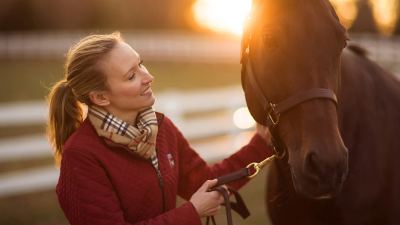Horse management: Barn owls for rodent control

It is late winter, and the rodent problem in your barn is starting to get annoying, as the pests are breaking into feed bags and helping themselves to horse treats and cat food. You know that mice can carry diseases, some of which can be seriously harmful for humans.
According to the Centers for Disease Control and Prevention (CDC), mice and rats can directly or indirectly transmit over 20 diseases worldwide. Several of these — such as leptospirosis and salmonellosis — are contagious to horses as well. And what about the summertime moles and gophers in your pasture, which make a mess of things with their tell-tale piles of dirt?
Rodent control is one of the toughest issues to deal with on horse properties. These animals are small and stealthy and are primarily active after dark, when we can’t see them. So, how do you go about reducing the rodent population without resorting to lethal trapping methods or using chemicals that are deadly to other animals in the ecosystem, including dogs and barn cats?
Using barn cats as the primary means of rodent control is often not effective and comes with its own set of challenges. For one, horse barns have much to offer to rodents in terms of food, water and shelter, and due to rodents’ small size and rapid cycle of reproduction, cats may not be able to control the rodent populations on their own. Additionally, while cats are worthy additions to the barn, they are at a much higher risk for developing infectious diseases or acquiring parasites and require more health and veterinary care than we often realize.
All of the reasons outlined above explain why rodent control in barns should involve more than just our feline friends.
Enter nature’s mousetrap: the barn owl!
Barn owls are perfectly suited for horse properties, as they hunt in open meadows and grasslands. These creatures of the night have excellent low-light vision; they fly silently; they are equipped with sharp beaks and powerful talons; and their hearing is extraordinary — all of which makes them death on wings for gophers, rats and mice. A family of barn owls will consume about 2,000 mice and/or other rodents in just a few months. The good news for you is that all this method of rodent control requires on your end is the installation of a simple barn owl nest box — and creating the right habitat for their prey.
Barn owls need rough grassland to thrive, because that’s where voles, shews, field mice and other small rodents live. An overgrazed pasture, a lawn or even monoculture croplands won’t provide the diverse habitat that rodents like. Rodents — and, therefore, barn owls — favor well-established, tall grasslands (think prairies or meadows), perhaps with brush piles or hedgerows nearby.
Barn owls are secondary cavity dwellers, which means they live in holes that somebody else has already created — for example, a hole pecked by a woodpecker in an old tree or the dark rafters inside a quiet barn. We can take advantage of this habitat preference, as it means that these creatures will adapt well to barn owl nest boxes, which can be purchased or made.
Place your barn owl nest box in a quiet location, preferably 10 to 20 feet off the ground. Position the opening away from direct sunlight and prevailing winds. Nest boxes can be hung inside unused barns, on the outside of farm buildings or in trees. If the boxes are mounted on a wooden pole, consider utilizing a baffle, which will help keep cats, raccoons or other predators from reaching it. Many barn owls will reuse the same nest box year after year. It is best to hang nest boxes by January or February, as barn owls begin nesting in late February.

You’ll be hard-pressed to find an easier rodent control method than the nest box. Once you install your barn owl nest box, nature will do the rest. Additionally, barn owls are not likely to be aggressive toward people, nor will they attack pets or livestock.
Barn owls are common on every continent in the world (except for Antarctica), so no matter where you are, your horse property can benefit from having a barn owl working to your advantage. And not only will the presence of barn owls make a dent in your rodent population, but their tawny colors are beautiful to see at dusk, and their bone-chilling, screechy cry is thrilling to hear at night.
In addition to setting up barn owl habitats, consider implementing these other natural rodent control methods:
- Keep your barn clean, well-lit and dry.
- Store feed in tightly sealed metal trash bins.
- Store blankets, wraps and saddle pads in completely sealed rooms to minimize access to nesting materials.
Remember: Rodent control is a year-long management practice. Follow these steps to help ensure that your barn remains rodent-free through every season.















